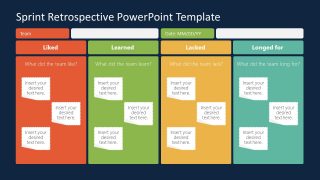
This can be more formal with an informal demo presentation to internal team members. The sprint review gives teams a chance to show their progress on the latest sprint. Although identical – because both take place at the finish of the sprint – it’s a specific exercise and should always be considered such. The sprint review and sprint retrospective are widely acclaimed scrum retrospective meetings. What is the Difference Between A Sprint Review And A Sprint Retrospective? Sometimes may lose team rhythm, or critical ceremonies such as sprint retrospectives are often so typical teams don’t use them to any extent for their benefit.

Ironically, the routine could cause a problem in productions. If you use agile methodologies, it’s possible you already practice sprint retrospectives on your daily schedule. Why Do You Need To Run A Sprint Retrospective? An annual Sprint review meeting is held to review and improve project execution processes. The Sprint Review meeting is held during its final phases and allows Scrum Product Owners to review all commitment items completed and properly implemented before deploying the system. Combining them are sometimes dubbed Sprint Planning Meetings. How Sprint Cycle And Ceremonies Improve Project Execution?Įach Sprint starts with an additional planning session describing the content of the Sprint: What – Part 1 – Sprint Planning Meeting. The entire team discusses the given chance to develop the ideas for this Sprint. Retrospection has its benefits because they happen the last time the sprint ends. A retrospective is attended by the product developer, scrum master, and development team.īased on the conversation conducted in retrospect, the group executes changes and proceeds with incremental improvements into the coming Sprint. What is the actual Value Of A Sprint Retrospective?Įverything that impacts the process of building a product, including tools and practices, is open for review. The retrospective session has been designed to identify and find new ways to eliminate pitfalls and past mistakes and will also include the product owners, scrum masters, development team members, and optional developers. Scrum team meetings usually last 3 hours at a Sprint for a year. Sprint Retrospective meetings will take place before Sprint Review and before Sprint Plans.

What Is Sprint Retrospective Meeting In Scrum? The retrospective should be safe for people to give honest and unbiased feedback on how the process goes smoothly and what is possible to improve. The thumb rule regarding sprint retrospectives is that the meeting typically takes about 60 minutes a week. A man needs to understand which blade he wants sharpening. This has been very helpful, mainly since agile development focuses primarily on constant improvement. According to Scrum guides, the sprint retrospective provides an opportunity for Scrum Teams to evaluate themselves to develop an improved version of a process that could occur in the next Sprint. In essence, retrospectives allow you to revisit the past events in your life.

Here you will find what is sprint retrospective is, the essential elements of the sprint, and why it is crucial. An agile retrospective provides many advantages. Sprint retrospective has always been regarded as an important meeting for Scrum. What will affect your retrospective experience? Retrospective sprints are recurring meetings held after sprinting to discuss what was good during the previous sprint and what can be improved for the next sprint cycle.Īlthough sprint retrospective work is new to your team, chances are the production workers you work with have previously participated in them as a team member.Īs with all rituals, the emotions can vary according to a person’s previous experiences and previous experiences. The sprint retrospective is a recurring meeting where you can discuss a complete workflow improvement while returning to the finish line of the sprint and planning for the next. In this image, we can depict how Sprint retrospective is an essential aspect of scrum master it is a way to enhance the quality and effectiveness of your project. Scrum is an ongoing improvement process, and retrospective Scrum is an opportunity to achieve the goals. Read the blog and get all your answers to know more about sprint retrospectives. The way this is going will be different than what we thought.

If the sprint retrospective isn’t done correctly, it may start the blame games. Most users take around 30 to 90 minutes in a retrospective, but scrum teams that collect feedback asynchronously usually take 2 to 5 days to drive their retrospectives. Ideally, these agile meetings will highlight potential changes, creating meaningful process improvements that ultimately move the team forward. You have likely played a sprint retrospective once or twice, which is not uncommon. Search Search for: Search Categories Categories


 0 kommentar(er)
0 kommentar(er)
